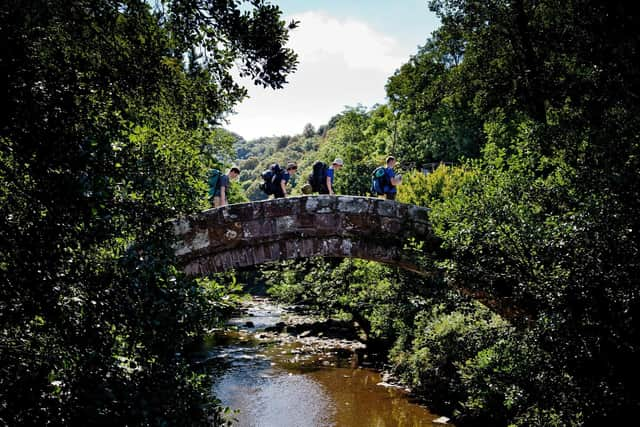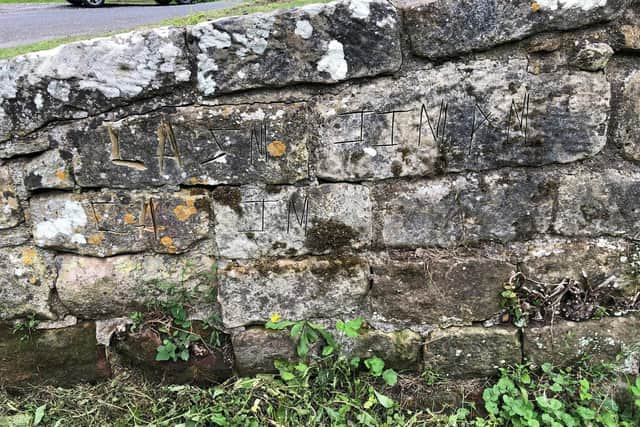Beggar's Bridge, Glaisdale: Power tool used to engrave 17th-century bridge in North York Moors National Park in 'staggering' act of vandalism
and live on Freeview channel 276
Beggar’s Bridge spans the River Esk in Glaisdale, close to the Coast to Coast walking route, but has been ‘significantly damaged’ by an angle grinder used to engrave someone’s initials on the stonework.
The 17th-century bridge replaced an earlier 14th-century structure and some of the original stones are still in place. It is a Scheduled Ancient Monument.
Advertisement
Hide AdAdvertisement
Hide AdFour pieces of the parapet wall have been gouged with inscribed letters that are 1.5 inches in depth. Because the brickwork is thin in places, some of the stones may need to be replaced.


The National Park Authority’s heritage and conservation officer Annabel Longfield-Reeve said: “Beggar’s Bridge is an irreplaceable historic asset that we are keen to preserve for future generations.
“We’re shocked that someone or a group of people would commit such a crude act of heritage crime and we urge anyone with information that might be helpful to contact the police.”
Experts will now assess whether the damage, which is located in a prominent position, can be removed or repaired, without causing structural instability to the monument.
Advertisement
Hide AdAdvertisement
Hide AdGlaisdale parish councillor Roger Norris added that the incident had shocked local residents: “Beggar’s Bridge is a national treasure that has survived for such a long time.


“To think that someone would carry a grinder there for the purpose of damaging it in this way is outrageous. This isn’t children scratching stones, this is criminal vandalism.”
Beggar's Bridge was built in 1619 by Tom Ferris, a wealthy merchant who became Sheriff of Hull in 1614 and Mayor in 1620. Legend has it that he was originally the son of a poor Egton farmer and loved Agnes Richardson, daughter of a squire across the River Esk. Ferris was rejected as a suitor and denounced as a ‘beggar’ by the squire. He thus resolved to go to sea to seek his fortune, but was prevented from saying goodbye to Agnes by floods making the river impassable. After making his fortune in the Caribbean, Ferris returned to marry Agnes and built a bridge to help future lovers. Beggar's Bridge may incorporate stonework from an earlier bridge that had collapsed by 1577.
Anyone with information regarding the damage should contact North Yorkshire Police on 101. The crime reference number is NYP-27072023-0395.
